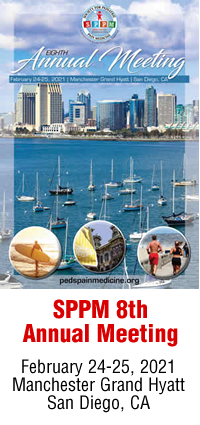Annual Meeting Reviews
The Child with Ehlers-Danlos Syndrome
By Tracy E. Harrison, MD
Department of Anesthesiology and Perioperative Medicine
College of Medicine & Science
Mayo Clinic
Rochester, Minnesota
The focus of Session II of the Seventh Annual Meeting of the SPPM was care of the child with Ehlers-Danlos syndrome (EDS) and opened with an informative presentation by Dr. Kenneth Goldschneider who set the stage for understanding the specific challenges of this unique population. He reviewed the 2017 revised criteria for EDS and emphasized the many lifestyle recommendations important for maintaining or returning to typical functioning, not only for those children with EDS but for all individuals with chronic pain.
Dr. Tricia Vecchione then presented considerations for postoperative pain management reminding us that, while regional anesthesia is an important tool in the armamentarium against pain, some patients with EDS present with an increased resistance to the effect of local anesthetics. She encouraged the audience to consistently consider the diverse components of multimodal analgesia and to acknowledge each patient’s unique experience. Treatment of low-pressure headache can be particularly challenging, and Dr. Genevieve D’Souza provided an invaluable review of the diagnostic criteria and summary of the therapeutic modalities during the third session of the morning. Particularly helpful was a QR code she provided at the conclusion of her presentation which included a compilation of journal articles and practical recommendations for the interested participant to explore.
One of the themes that persisted through this session was the ongoing need for holistic, multidisciplinary care paramount in treatment of chronic painful conditions. Dr. Sara Williams reminded us of the powerful connection between the mind and the body and how cognitive behavioral therapy is best applied in the management of all chronic pain conditions.
At the conclusion of the session, to bring a personal aspect of treatment from the patient’s perspective, Miss Mary Young and her mother, Johanna, took the stage. Mary was the first patient to attend a multidisciplinary pain program at American Family Children’s Hospital in Madison, Wisconsin and shared how the ongoing support and strategies provided by her caregivers allowed her to regain her autonomy and improve her daily quality of life.
The session served to highlight the importance of forming a cohesive team with the goal of providing the highest quality of care to our patients who entrust us to understand their challenges and consider all facets of pain treatment.




